Brian Meert's Blog, page 32
October 15, 2023
How To Find Perfect Products To Sell on Amazon
Do you want to know how to find perfect products to sell on Amazon?
With millions of sellers globally, Amazon is a wide battlefield for aspiring entrepreneurs and seasoned business owners. One of the keys to success in this competitive marketplace is knowing the right products to sell.
This article will discuss how you can identify the perfect products to sell on Amazon.
1. Conduct Market Research and Analysis Source: Canva
Source: CanvaExploring various product ideas is the first step in finding the perfect products to sell online through Amazon. You should analyze market trends and consumer behavior to pinpoint potentially top-selling items with high demand. Generating a product idea that caters to a high-demand niche can contribute to your success as an Amazon seller.
Identify niche markets.Researching top-selling products across different categories on Amazon can provide insights into current market trends. However, you should consider your passion, hobbies, and interests when identifying the products you would sell on Amazon. Selling products aligned with your enthusiasm often results in motivation and smart marketing strategies. You can check Amazon’s Best Sellers to identify the popular categories and products. Then, look for the ones that interest you.
Analyze demand.You can use the Amazon search bar to see popular product categories and better understand customers’ wants. Analyzing the product search volume on Amazon using varied tools helps know the demand and identify possible niches. The higher the search volume, the higher the demand. Likewise, you should conduct demographic and psychographic research to know your target audience’s preferences. This way, you can tailor your product selection to your target audience’s needs.
Analyze competition.You should identify your direct and indirect competitors to identify the gaps in their offers you can use to your advantage. Study the products they offer, their pricing, and their position on the market. You can also conduct a SWOT analysis of your competitors.
2. Product Criteria and Selection Source: Canva
Source: CanvaChoosing the right products to sell on Amazon is an important decision and should, therefore, involve careful consideration of various product criteria. The following are the factors you should consider:
Profitability analysis.It would help if you determined the total cost per unit and the manufacturing and shipping costs. Then, research competitive prices for similar products on Amazon. This way, you can set a competitive yet profitable price that will cover the costs and lead you to a reasonable profit margin.
Product quality and reliability.You should request product samples from your supplier to evaluate the quality and reliability of the products you will sell. Likewise, it is crucial to conduct quality checks and inspections to ensure that the products meet the defined criteria.
Product size and weight.Calculate how much the shipping costs would be based on the product’s size and weight. You should also determine how the shipping costs would impact the pricing and profitability.
Seasonality and trends.Another factor that you should also consider is the product’s seasonality. You should analyze the historical sales data and trends of the product you’re trying to sell to help identify seasonality.
3. Supplier Research and Selection Source: Canva
Source: CanvaSelecting the right suppliers is vital in finding and sourcing the perfect products to sell on Amazon. Here are some considerations you should take note of:
Identify potential suppliers.You can check for places online where you can find suppliers for your desired product category. Many Amazon sellers source from Alibaba. You can also attend industry-specific trade shows and contact industry associations about the products you want to sell.
Communicate and negotiate.Communication sets the expectation between two parties. Proper communication ensures everyone is on the same page and has the same thoughts regarding product specifications, pricing, and more.
4. Legal and Regulatory Compliance Source: Canva
Source: CanvaFollowing laws and regulations are crucial to help maintain a trustworthy and successful business. It would be best if you follow these steps:
Check legal requirements.Compliance with the law helps ensure that your products and business practices are legal. It helps assure the customers that their online products are safe and high-quality. Hence, business owners must check legal requirements and adhere to them.
Intellectual property rights.Familiarize yourself with the different types of intellectual property. These include trademarks, copyrights, and patents. It would be best to understand what each type is for and how they apply to your products.
5. Testing and Validation Source: Canva
Source: CanvaTesting and validation are important to ensure that the products you want to sell on Amazon meet quality standards and customer expectations.
Product samples.You can order samples of the product you want to sell and check for its quality, functionality, and appeal. Conduct hands-on tests to ensure that the products you add to your store meet expectations and quality.
Market testing.Market testing is important in product development and launch. It entails introducing your products to a small market segment to check their possible success and gather feedback before launching them fully to the public. You should decide on the testing methods that you will employ. Likewise, you should present the product to the test market similarly to how it will be in the real world.
6. Product Listing and Optimization Source: Canva
Source: CanvaCreating an effective product listing and optimizing it for Amazon attracts customers and drives sales. Here are the steps you can take to get it done:
Optimize product listings.You should incorporate a clear, descriptive, and keyword-rich product title that will showcase the features and benefits that come with your products. Likewise, you should include high-quality images and write an engaging product description to show what your product offers.
Pricing strategy.Consider using dynamic pricing tools to adjust your pricing based on the market’s demand and the competitor’s price points. You can also offer limited-time promotions and discounts to attract buyers and drive sales.
7. Launch and Marketing Strategy Source: Canva
Source: CanvaImplementing an effective marketing strategy is essential when launching a new product on Amazon. The following are the factors you should consider:
Product launch.Launching a product successfully on Amazon and marketing it requires thorough planning. You can share the launch on social media and other online communities to gain interest and initial sales.
Continuous marketing.Constantly check your sales data, customer reviews, and competitor performance to check areas for improvement. You can also hire an Amazon ad agency to boost your products’ visibility on the platform.
Final Thoughts on “How To Find Perfect Products To Sell on Amazon”Searching for the perfect products to sell on Amazon may seem lengthy, but it is highly rewarding. We have done our best to simplify the process for you in this guide. By leveraging our strategies, you’ll increase your chances of uncovering profitable opportunities and building a successful Amazon business.
Frequently Asked QuestionsCan I use product research tools to identify the best products to sell?Product research tools are important for finding the best products to sell on Amazon. This is because they provide valuable insights into market trends and preferences of the consumers.
Is selling private-label products a good idea?Considering private-label products is a strategy to differentiate and offer unique items. It could lead to more profitable products.
Can I sell products on Amazon that have already been sold by other sellers?Yes, you can sell products that are already on Amazon. However, you should focus on differentiation through branding, pricing, quality, or other unique value propositions.
Related ArticlesOctober 14, 2023
The Best Amazon Seller Central Guide
Do you need an Amazon Seller Central guide?
If so, you are in the right place! Amazon Seller Central is your gateway to reaching millions of potential customers and growing your online business.
This blog post will walk you through the basics of Amazon Seller Central. Whether you’re a seasoned seller or just getting started, our step-by-step guide will help you easily navigate the platform.
What Is the Amazon Seller Central?
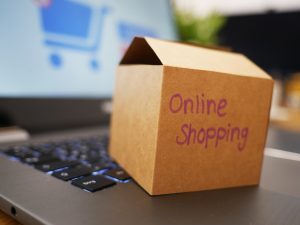
Source: Pixabay
Amazon Seller Central is a platform provided by Amazon for individuals and businesses to sell their products on the Amazon marketplace. It is where you run your Amazon store. This makes it a crucial tool for anyone looking to sell products on the world’s most popular online marketplace.
Things You Can Do on Amazon Seller CentralAmazon Seller Central is your online selling wizard, packed with tools to make your business soar. Below is a lowdown on what you can do on Amazon Seller Central:
Product listings: You can create and manage listings for the products you want to sell. This includes adding product descriptions, prices, and images.Order management: Seller Central helps you keep track of orders from customers, process them, and confirm shipments.Customer communication: You can communicate with customers, answer questions, and provide support through the platform.Inventory management: You can monitor your inventory levels and restock when needed.Sales reports: It provides data and reports on your sales performance, helping you make informed decisions.Marketing tools: You can use advertising and promotional tools to boost your product’s visibility.Payment and finances: You’ll receive payments for your sales through Seller Central, and you can manage your financial information there.What You Need to Get Started on Amazon Seller CentralGetting started on Amazon Seller Central is easy when you have the right information. The following are the details required to get started on Amazon Seller Central:
Name and address: Your business name and address are the primary details required, as this is the where and who of your Amazon business.Bank account: Another thing required is a bank account for Amazon to send you the money you make.Tax information: Amazon needs to know if you are playing by the tax rules, so have your tax information ready.Contact information: You’ll need an email address and phone number, as Amazon needs a way to reach you and keep you in the loop.Credit card: Amazon requires a valid credit card for verification purposes.Product information: Amazon would need you to provide details about what you plan to sell on its platform. These details include names, types, and how you plan to deliver them to happy customers.Selling plan: Do you want an individual or professional selling plan? Decide based on your business type and customer preferences.Creating Your Amazon Seller Central AccountSetting up your Amazon Seller Central account is your ticket to become an Amazon seller, and below are easy steps to get it done:
Step 1: Visit Seller Central.You can go to sellercentral.amazon.com in your web browser to get started.
Step 2: Click on “Sign Up”.Look for the “Sign Up” button and click on it.
Step 3: Choose your account type.As mentioned above, Amazon gives you two account options: “Sell as a Professional” or “Sell as an Individual.” You can choose the option that works best for your Amazon business plan.
Step 4: Enter your email.Input the email you want to associate with your seller account. Make sure it is one you can easily access.
Step 5: Create a password.You can choose a strong and secure password. Amazon will guide you on what makes a good one.
Step 6: Click “Sign in using our secure server”.Once you set your email and password, hit “Sign in using our secure server” to sign into Amazon safely.
Step 7: Fill in your information.Fill in your business name, address, and phone number.
Step 8: Provide your bank account details.Input your bank account details to receive the payments for your sales on the platform.
Step 9: Tax information.Share your tax details.
Step 10: Credit card verification.For a final check, Amazon will ask for your credit card details. It’s not a charge but a way to confirm your identity.
Step 11: List your products.Share your product details, like names, descriptions, and prices, and upload high-quality images.
Step 12: Set your prices.Head to the “Pricing” tab and decide how much your products will sell for.
Step 13: Shipping strategy.Choose how to handle shipping using FBM (Fulfillment by Merchant) or FBA (Fulfillment by Amazon).
Step 14: Launch your shop.Tap the “Launch” button to officially join the League of Amazon sellers.
The Cost of Selling on AmazonSelling on Amazon is fantastic, but it has a few fees to keep the gears running smoothly. They are as follows:
Referral fee: This is a percentage of the item’s sale price. It varies by category, usually between 6% and 45% of the sale price.Fulfillment by Amazon (FBA) fees: If you opt for Amazon to store, pack, and ship your products through FBA, you’ll pay fees based on the size and weight of your items.Monthly subscription fee: For a Professional Seller account, Amazon charges a monthly fee of $39.99. Individual Sellers don’t pay this fee but have a per-item fee of $0.99.Closing fee: This applies to media categories like books, DVDs, and music. It’s a per-item fee.Storage fees: If your products remain in Amazon’s warehouses for an extended period, you’ll be charged storage fees.The Essential Components of the Amazon Seller Central DashboardThe following are the key features of the Amazon Seller Central dashboard:
Homepage highlights: As soon as you log in, the homepage gives you a snapshot of your business health. You can monitor your sales performance, pending orders, and customer feedback here.Inventory management: The “Inventory” tab is your digital stockroom where you keep your products organized.Order central: The “Orders” tab is your command center for making sure products get to customers on time.Listing option: Product listings are your online storefront, so craft proper titles, descriptions, and images.Pricing tools: Navigate to the “Pricing” tab to set and adjust your product prices to stay competitive.Fulfillment options: Decide how to handle shipping under the “Fulfillment” tab.Customer reviews: Monitor customer feedback by checking the “Customer Reviews” section. Respond promptly to build trust and enhance your seller’s reputation.Performance metrics: Go to the “Performance” tab to monitor order defect rate, late shipment rate, and customer service performance.Reports Central: Amazon provides various reports to help you analyze your sales, track inventory, and understand customer behavior. Use the “Reports” section to gather insights and make informed decisions.Help and support: Use the “Help” menu to access tutorials, FAQs, and customer support if you need assistance.How To Add Products on Amazon Seller Central

Source: Pixabay
Follow the easy steps below to add products to your Amazon Seller Central account:
Step 1: Navigate to your inventory.The first step is to log into your Amazon Seller account. Once you are in, go to the “Inventory” tab.
Step 2: Choose “Add a Product.”In the “Inventory” tab, you will find the “Add a Product” button; click on it.
Step 3: Fill in the product details.Amazon will prompt you to give details like the product name, its condition (new, used, or refurbished), and the product category. You can put your creativity into crafting a catchy and informative title that grabs attention.
Step 4: Product ID and offer.Every product has its unique identifier, known as the Product ID. This ID could be a UPC, EAN, ISBN, or ASIN. Enter the correct ID for your product. Choose your offer type depending on whether you’re selling a new product, a used product, or a collectible.
Read more: The importance of Amazon ASIN.
Step 5: Set your price.Go to the “Pricing” section to determine your products’ cost. Consider production costs, competitor prices, and your desired profit margin.
Step 6: Manage inventory.In the “Inventory” section, you can track the units you have in stock. Set your initial quantity, and Amazon will help you manage your inventory levels.
Step 7: Images and descriptions.Upload high-quality images that showcase your products from different angles. Craft an engaging and detailed product description to catch the attention of potential buyers.
Step 8: Save and finish.Once you add all the necessary details and tweaks to your product listings, tap the “Save and Finish” button.
Changing Amazon Seller Central Account InformationThe following are easy procedures for changing account information on Amazon Seller Central:
Step 1: Visit sellercentral.amazon.com and log in with your credentials.Step 2: On the top right corner, you will find a button labeled “Settings,” click on it.Step 3: From the drop-down menu, choose “Account Info.”Step 4: Under the “Your Seller Profile” section, you can update personal details like your display name, business display name, and email address. Click “Edit” to make changes.Step 5: If you need to modify business information, scroll down to the “Business Information” section. Click “Edit” to update details like business name and address.Step 6: For tax-related updates, navigate to “Tax Information” and click “Edit” if necessary. Ensure your tax details are accurate to comply with regulations.Step 7: If your banking details need a refresh, go to “Deposit Method” under “Payment Information.” Click “Edit” to make changes.Step 8: For changes related to login and security, explore the “Login Settings” section. You can keep your account secure by using a strong password.Step 9: Confirm or save your updates after making the necessary changes. Look for a “Save Changes” or “Confirm” button at the bottom of the page.Step 10: Amazon may require additional verification for certain changes. Follow any prompts to complete the verification process.How To Grant Amazon Seller Central Access to Third-Party SellersFollow these straightforward steps below to grant access to third-party sellers:
Step 1: Visit sellercentral.amazon.com and log in with your account credentials.Step 2: On the top right corner, click on “Settings.”Step 3: From the drop-down menu, choose “User Permissions.”Step 4: Click on “Invite a new user.” Fill in the details of the person you invite, including their email address.Step 5: Decide on the level of access the new user will have. Amazon provides different roles such as “Full Access,” “View & Edit” and more.Step 6: Specify the marketplaces the new user will access. If you operate in multiple regions, you can control which ones they can manage.Step 7: Review the details to ensure everything is correct. Click “Send Invitation” to dispatch the access invitation.Step 8: The person you invited will receive an email with instructions. They need to accept the invitation through the provided link.Step 9: Once accepted, the new user will have access to the specified sections of your Seller Central account. You can always check and manage user permissions under “User Permissions” in the “Settings” menu.Simple Steps to Contact Amazon Seller Support TeamBelow are easy steps to contact seller support on Amazon:
Step 1: After logging into Seller Central, look for the “Help” option in the top right corner of the Seller Central dashboard.Step 2: Click on “Contact Us” to access the contact page.Step 3: Choose the issue or topic that best matches your query from the provided options.Step 4: Select your preferred contact method: chat, phone, or email.Step 5: Fill in the required information and provide details about your issue.Step 6: Click “Submit” or “Initiate Chat” to contact Amazon Seller Support.Conclusion on “The Best Amazon Seller Central Guide”Congratulations! You have successfully covered the basics of Amazon Seller Central. Continuously explore the platform, stay informed about updates, and adapt your strategies to meet the evolving needs of your business. With dedication and strategic planning, you will thrive in the dynamic world of Amazon selling.
Do you want to increase your product’s visibility on Amazon? Contact the leading Amazon ad agency.
Frequently Asked QuestionsWhat is Amazon Seller Central, and how do I get started?Amazon Seller Central is your online selling hub, allowing you to manage your products, orders, and customer interactions. To start, sign up for an Amazon Seller account on sellercentral.amazon.com and follow the simple steps to set up your shop.
How do I add products to my Amazon Seller account?To add products, log into your seller account, go to the “Inventory” tab, and click “Add a Product.” Fill in the product details, images, and pricing to showcase your products in the Amazon marketplace.
What fees should I expect on Amazon Seller Central?Amazon charges various fees, including referral, fulfillment, and subscription fees. Check the “Pricing” section in the Seller Central for detailed fee structures, and use the Amazon fee calculator for accurate estimates.
Related BlogsSelling on TikTok: Everything You Need To Know
Are you considering selling on TikTok?
TikTok isn’t just a platform for sharing entertaining videos. It’s a thriving marketplace where individuals and businesses can showcase and sell their products.
This blog post will cover everything you need to know to start selling on TikTok. Secure your way to the top by reading the following:
Can I sell on TikTok?Why should I sell on TikTok?How to sell on TikTokFrequently asked questions about how to sell on TikTok.Can I Sell on TikTok?If you are wondering if you can sell items on TikTok, the answer is “Yes.” Since 2020, TikTok has partnered with e-commerce companies like Shopify, BigCommerce, Pretashop, and Ecwid to offer its users premium shopping solutions. The social media giant has now taken this a step further by launching TikTok Shop, its e-commerce product.
These features allow sellers to showcase products and make them available for sale. So, TikTok users can make purchases without leaving the app.
Why Should I Sell on TikTok? Source: Canva
Source: CanvaAccording to Statista, American consumers spend more time viewing and scrolling on TikTok than other social media platforms. Another study also shows that about half of TikTokers half purchased an item after seeing it on the platform. These stats show TikTok’s great potential as a marketing tool.
Here are more reasons you should sell your products on TikTok:
Vast audience: TikTok has over a billion active users worldwide, providing a massive pool of potential customers.Engagement: The platform’s short, engaging videos can captivate your audience and keep them interested in your products.Trend utilization: You can harness TikTok trends to make your products more relatable and appealing to a broader audience.Cost-effective: TikTok can be an affordable way to reach your target market compared to other advertising options.Creativity: The platform encourages creativity. It allows users to showcase products in unique and compelling ways.Direct interaction: TikTok enables direct engagement with your audience through comments, likes, and messages.Brand building: You can build a strong brand presence by consistently sharing your story and values.Read more: Does TikTok advertising work?
How To Start Selling on the TikTok Shop Source: Canva
Source: CanvaYou can scale your online business by using TikTok’s e-commerce solutions. Here are steps you can follow to start selling products on TikTok shop:
1. Create an account.First, you need to create an account on the TikTok Shop. You can create one with your existing TikTok account. However, if you have a personal account, you need to switch it to a business account.
Visit the TikTok Shop seller page and click the “Sign up with a TikTok Account.” You will be directed to the “Authorize with TikTok” page; click “Authorize.”You can complete your account creation by clicking “Start Selling.”2. Finish your Sales Account Data and Verification.To start your selling journey on the TikTok shop, you need to provide your sales account data and verification information. Begin by choosing the type of business you want to run. Then, type in the shop name and upload any identification needed in the verification stage. After successfully uploading your UMID on the TikTok verification page, click “Submit” to process it.
3. Add your products to your TikTok shop.Once your TikTok account has been successfully verified, add your product listing to your shop. To do this, follow these steps:
Ensure that the product on your TikTok follows the TikTok policies.Click “Add first product” and select “Upload now,”Then, type in the product name and other descriptions about the product and select the proper “product category,”Upload at least three photos of the product and ensure it has a 1:1 dimension showing product details.Once you are good to go, click “Publish.”Note: You can also upload product videos on your TikTok shop.
Final Thoughts on “Selling on TikTok”Selling on TikTok allows you to take advantage of a dynamic and engaging platform. With its user-friendly features and creative tools, the TikTok Shop empowers sellers to showcase their products in a fun and authentic way. It is e-commerce on a whole new level.
Are you looking to boost your sales on TikTok? Contact the best TikTok advertising agency!
Frequently Asked Questions About How To Sell on TikTok:Can I start selling on TikTok without any followers?Unfortunately, you can not start selling products on TikTok unless you create your own TikTok business account and have a minimum requirement of 1,000 followers.
How much does it cost to sell on TikTok?Depending on your product sales, it usually ranges from 1.8% to 5%.
What is one of the easiest ways to encourage users to create content for your brand?You can create a TikTok hashtag challenge about your brand.
Related ArticlesHow To Find a TikTok Video You’ve Watched
How to Check Amazon Trends: A Seller’s Guide
Do you know how to check Amazon trends?
The Amazon store is not just a marketplace. It’s a dynamic ecosystem where trends evolve, and products rise and fall. As an Amazon seller, you need to learn how to check Amazon trends to boost your chances of success.
This guide will discuss all you need to know to utilize Amazon trends.
What are Market Trends on Amazon?Market trends on Amazon are the current buying patterns and consumer preferences that shape the e-commerce platform. These trends help sellers understand what’s in demand and what customers want. They can then make informed decisions about what to offer on Amazon and how to tailor their marketing strategies to meet customer needs.
Easy Ways to Find Amazon Trends
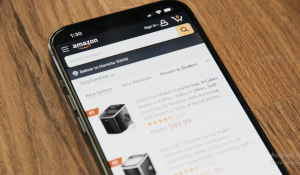
Source: Unsplash
As a seller on Amazon, understanding how to find product trends is your compass to online marketing success. The following are easy ways to find Amazon trends:
1. Use Google Analytics.Google Analytics is a free product research tool that lets you see the channels driving the most attention to your Amazon store. This product research tool lets you see how customers visit, click, and move around your online store. It gives you insights into where your customers come from, what they like, and what makes them stay or leave.
In addition, Google Analytics reveals the keywords Amazon customers use. You can use these keywords to optimize your product listings and align them with emerging trending items.
Do your customers use their phones or computers to explore your products? Google Analytics lets you discover if your customers prefer mobile devices over computers. So, you can optimize your listings for mobile viewing to better connect with your customers.
2. Utilize Facebook insights.If you have a strong online presence, you can use insights from Facebook to find Amazon product trends. These insights reveal who’s interested in your products and what they engage with on Facebook.
Do you wonder which posts get the most love on your Facebook page? Using this insights tool lets you understand what clicks with your audience. So, you can tailor your Amazon listings to mirror the content that performs well.
Also, you can use Facebook insights to discover your Facebook followers’ ages, gender, and locations. With these insights, you can align your Amazon offerings with the preferences of different demographics.
Facebook insights unveil when your audience is most active, allowing you to market your products when your audience is most likely to engage.
3. Leverage Google Trends.Google Trends provides real-time insights into what people are searching for. It’s like having a live feed of the hottest topics. By understanding current product search trends, you can align your Amazon listings with what’s capturing the attention of potential customers currently.
Also, you can use this market research tool to uncover seasonal patterns. It can highlight when certain product categories experience peaks in interest. By recognizing these patterns, you can plan your Amazon marketing strategies to ride the wave of seasonal trends.
Like top keyword research tools, Google Trends allows you to compare the popularity of different search terms. You can identify the most promising keywords by conducting comparative analyses and use them to tailor your Amazon listings accordingly.
4. Search relevant keywords.You can search relevant keywords to discover what’s trending on Amazon. This will help you gain valuable insights into current Amazon trends and tailor your product offerings to meet customer demands. Here’s how:
Amazon search bar: Start by typing keywords related to your product or niche into Amazon’s search bar. Amazon will suggest popular search terms, giving insights into what people seek.Amazon Best Sellers: Visit Amazon’s “Best Sellers” section to see the hottest products across various categories. This can help you identify what’s currently trending.Amazon’s Movers and Shakers: Explore the “Movers and Shakers” section, which shows products with significant sales increase. This can indicate emerging trends.Amazon keyword tools: Utilize third-party Amazon keyword research tools like JungleScout and Helium 10 to analyze search volume and trends related to specific keywords. These tools can provide data on what’s popular and in demand.5. Use Amazon trends report.Amazon Trends is a tool provided by Amazon that helps you track popular search terms and products. It offers insights into what customers are searching for, allowing you to identify emerging trends and products with growing demand.
By using Amazon Trends, you can make data-driven decisions to optimize your product listings and stay ahead of the curve in the ever-evolving e-commerce landscape. It’s a valuable resource for new and experienced Amazon sellers looking to stay competitive and capitalize on trending products.
Top Trending Products on The Amazon MarketplaceIn no particular order, the following are the best-selling products on Amazon:
1. Smart home gadgets.Picture a home where your lights, thermostat, and coffee maker respond to your every command. From voice-activated assistants to smart doorbells, these products make our homes feel like something out of a futuristic movie. As a seller, consider adding these futuristic products to your inventory to meet the increasing demand for home automation.
2. Fitness and wellness gear.Health is wealth. So, it should be no surprise that Amazon users invest in fitness and wellness gear like fitness trackers, resistance bands, and yoga mats. As people embrace healthier lifestyles, these trending products climb the charts. You can tap into this trend by adding these products to your inventory.
3. Technology marvels.Stay at the forefront of technology trends by offering the latest gadgets. Wireless earbuds, portable chargers, and cutting-edge smartphones are perennial favorites. As a seller, keeping up with technology marvels ensures your Amazon store remains a go-to destination for gadget enthusiasts.
4. Sustainable living products.The green movement is more than a trend; it’s a lifestyle. Sustainable living products, from reusable water bottles to eco-friendly kitchenware, are gaining traction. As a seller, consider incorporating environmentally conscious options to attract the growing numbers of eco-conscious consumers.
5. Beauty and personal care products.Beauty and self-care products are evergreen trends. Curate a section of skincare serums, makeup palettes, and beauty tools to cater to consumers seeking a touch of indulgence. A well-stocked beauty section in your Amazon store can make it a favorite among those looking for self-pampering options.
6. Home organization solutions.Help customers declutter and organize their homes with storage solutions. From closet organizers to space-saving gadgets, these products are in demand. As a seller, offering home organization solutions aligns your store with the trend toward a tidy and ordered living space.
7. Outdoor adventure essentials.The call for the great outdoors is strong, and outdoor adventure essentials are soaring in popularity. Top choices include camping gear, hiking essentials, and innovative gadgets for outdoor enthusiasts. Catering to the adventure-seeking market can set your store apart as a seller.
8. Pet care innovations.Pet care innovations, from smart pet feeders to cozy pet beds, are capturing the hearts of pet parents. As a seller, embracing this trend allows you to tap into the ever-growing market of pet enthusiasts.
9. Educational toys and games.Educational toys and games are highly sought-after products focusing on home learning. Curate a selection that combines fun and learning. It should cater to parents looking for engaging and educational play options for their children.
10. Fashionable activewear.Loungewear and activewear have become staples in modern wardrobes. From stylish leggings to comfortable athleisure wear, these trends are here to stay. As a seller, offering fashionable activewear ensures your store stays on-trend in the evolving fashion world.
Easy Ways to Promote Your Products on Amazon
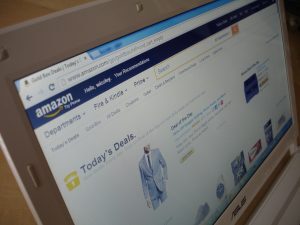
Source: Pixabay
The following are strategies you can employ to promote your trending products on Amazon:
1. Optimize your product listings.Start with the basics; make sure your product listings are top-notch. Use high-quality images, write compelling product descriptions, and incorporate relevant keywords. Doing this is like setting the stage for a stellar performance; the better the looks, the more attention it will grab.
2. Leverage social media platforms.Social media is your passport to the world. Share your products on platforms like Instagram, Facebook, and Twitter. Create engaging posts, run contests, and use relevant hashtags.
3. Run promotions and discounts.Running promotions and offering discounts are tried-and-true methods to attract attention. Use limited-time offers or bundle deals to attract your target audience. This gives them an extra reason to purchase your trending products.
4. Collaborate with influencers.Influencers have the power to sway opinions. Collaborate with Amazon influencers in your niche to promote your products. It’s like having a trusted friend recommend your products to their followers. This instantly builds credibility and widens your reach.
5. Create engaging content.Create engaging content around your trending products, such as blog posts, videos, or interactive quizzes. It’s like telling a captivating story that draws people in and keeps them hooked.
6. Utilize email marketing.Don’t underestimate the power of a well-crafted email. Send newsletters to your subscribers featuring your trending products. This is like sending a personalized invitation to a VIP club, informing your audience about your latest and greatest offerings.
7. Feature customer reviews.Let your happy customers do the talking. Feature positive customer reviews prominently on your product listings. It’s a chorus of satisfied voices singing the praises of your trending items, convincing potential buyers that they are making a great choice.
8. Opt for paid advertising.You can increase your sales volume by investing in paid advertising. If you aren’t a professional advertiser, consider hiring an Amazon advertising agency. Professional advertisers have the necessary skills and experience to run successful ad campaigns on Amazon.
9. Participate in online communities.Join relevant online communities or forums where your target audience hangs out. Participate in discussions and subtly promote your trending products when appropriate.
Top Amazon Trends and Forecasts for the FutureBelow are the top Amazon trends and forecasts for the future:
1. Continued rise of smart home technologies.The era of smart homes is just getting started. Expect an increase in the surge in smart home technologies on Amazon. From voice-activated assistants to innovative security systems, our homes are becoming smarter, and Amazon will continue to be the go-to destination for these futuristic gadgets.
2. Sustainability takes center stage.Expect an escalation of eco-friendly products, from reusable items to sustainable packaging. As consumers become more environmentally conscious, Amazon will be at the forefront of offering eco-conscious choices.
3. Augmented Reality shopping experience.Amazon has entered Augmented Reality (AR) shopping. Amazon users are already trying on clothes, visualizing furniture in their living rooms, and more. It’s like bringing the showroom directly to your device, and it will only get better.
4. Rise of micro-influencers.The era of mega-influencers might be making way for micro-influencers. Smaller, niche influencers are gaining popularity for their authenticity and relatability. As an Amazon seller, you might find success collaborating with micro-influencers with a more targeted and engaged audience.
5. Livestream shopping events.Shopping online is becoming a live experience. Live stream shopping events, where hosts showcase and discuss products in real time, are gaining traction. Amazon has embraced this trend with Amazon Live.
6. Voice commerce revolution.Talking to our devices is becoming second nature. Voice commerce, where users make purchases through voice commands, is rising. Amazon’s virtual assistant, Alexa, is expected to play a pivotal role in the voice commerce revolution, making it easier for users to shop hands-free.
7. Personalized and AI-driven recommendations.The future of Amazon involves hyper-personalized shopping experiences. Advanced Artificial Intelligence (AI) algorithms will analyze user behavior and experiences, offering tailor-made product recommendations.
8. Health and wellness technologies integration.Health and wellness are at the forefront of customer priorities. Amazon will likely integrate more health and wellness technology products into its marketplace. Users can expect a holistic approach to their well-being on Amazon, from fitness trackers to smart health monitors.
9. Enhanced customer engagement through gamification.Gamification strategies, where users engage in challenges or activities to earn rewards or discounts, could become more relevant to Amazon. This can turn shopping into a more fun and rewarding experience.
Final Thoughts on “How To Find Amazon Trends”Staying ahead of the game as an Amazon seller is all about understanding and leveraging the latest trends. By following the simple steps we’ve outlined in this guide, you can confidently check Amazon trends, identify profitable niches, and make data-driven decisions to boost your sales. So, get ready to ride the wave of success with the power of trend analysis.
Frequently Asked QuestionsWhat is the importance of checking Amazon trends for sellers?Understanding Amazon trends is crucial for sellers to stay ahead of the competition and align their product offerings with customers’ demands. It provides valuable insights into emerging patterns and helps sellers make informed decisions to optimize their strategies.
How can I easily check Amazon trends without using complicated tools?Checking Amazon trends can be simple, and you can start by exploring Amazon’s Best Sellers list for different categories. Also, utilize the search bar to observe auto-complete suggestions, revealing popular and trending search terms.
Is there a specific time or frequency I should check Amazon trends?While there isn’t a strict schedule, checking Amazon trends regularly is advisable, especially before making inventory decisions or planning promotions. Trends can shift, and staying updated allows sellers to adapt quickly to changing market behavior and consumer preferences.
Related ArticlesOctober 13, 2023
10 Direct Response Marketing Examples


What if you could make your phone ring just by sending an email? Or get a flood of sales just by posting an online ad? Sounds like magic, right? But direct response marketing can make it happen.
Direct response marketing is designed to elicit an instant response. Like getting people to buy, sign up for your email, or call right away.
Unlike regular brand ads, direct response talks directly to buyers. It uses emails, social media, TV, and more to drive specific actions quickly.
This article will look at ten direct response marketing examples that work well. And why they get people responding quickly.
Here’s a sneak peek of some of what you’ll learn in this article:
Why direct response marketing is popularCrafting a compelling call to actionTesting to improve campaign resultsUsing new tech like AI to get a better responseHow direct response and branding work together…And more.
The goal is to use the ten direct response marketing examples to show you how to drive real revenue and growth for your business.
Ready to learn?
Without further ado, let’s dive into the fascinating world of direct response campaigns!
Benefits of Direct Response MarketingDirect response marketing has big advantages over old-school traditional marketing. Let’s look at why it’s so popular today:
It is a marketing technique that gets an immediate response. Your target audience takes action right away when you want. They might buy now or sign up on the spot. Regular ads are slow. Direct response delivers faster results.You can measure results clearly. See how many sales or emails it got. Or how many calls came in. Then, you try to improve the results. Older forms of marketing are hard to measure.It lets you talk to buyers directly. Get their attention with offers for them. Show them why your product will help them. It feels personal.You can follow up after. Turn a signup into a sale. Or make them repeat customers. Traditional marketing doesn’t build relationships like that.Every part works together to get a response. The offer, images, and message tell folks to act now. Not just be aware.You can test and refine it to work even better. Change the message or offer to get more responses. See what wins each time.It’s a type of marketing that works across media, old and new. Direct response marketing channels include mail, email, Facebook ads, TV, and more. It’s flexible!
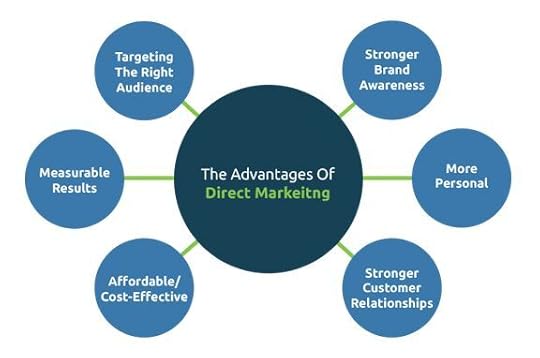
Image source: conquestgraphics.com
These are the reasons why smart companies use direct response marketing today. It’s a way to get better results from your marketing and advertising campaigns. A powerful driver for sales and growth!
Components of Direct Response Marketing CampaignWhat makes a direct response campaign work? A successful direct response marketing campaign should have most of these key components:
Targeted audience – Be super clear about who you want to reach. Dig into the data on current customers. Build buyer personas with details like age, gender, job, interests, and needs. Tailor your message to them.Compelling offer – Come up with an offer your audience can’t refuse! Maybe a big discount, coupon, or contest. Make it urgent with “limited time only.”Sense of urgency – Use words like “act now!” and “limited spots available”. Scarcity and pressure make people act quickly.Clear CTA – Tell them exactly what to do in big, bold letters. “Sign Up Here” or “Buy Now”. No confusion.Personalization – Use their name, location, interests, and past actions to customize messages. “Hey John in Phoenix, people like you love our tool for X”. It feels like it was made for them.Easy response – Make taking action super simple. Have info pre-filled on signup forms, a few fields to complete, and 1-click buys. Don’t make your prospects work hard.Testing – Try different CTAs, images, offers, etc. See what gets the best response. Then, you double down on what’s working.Metrics – Track results closely. How many sales or emails did it get? What worked and what didn’t? The data will optimize future efforts.Bring these together into a campaign that speaks right to your audience. Persuade them to act with irresistible content and offers. Make responding easy. Remember to test and refine based on data. Get these right, and you can have successful marketing results.
Understanding the Target AudienceWho are you talking to? That’s the big question for direct response.
You need to dig deep into your target audience. Get to know them like old friends. Their age, gender, location, job, income, interests, goals, and pain points. Having this understanding is important in direct response marketing. It helps your message speak right to what matters to your audience.
You want them to feel like you’re in their head. That connection is money!
Start by looking at your current buyers. See what traits they share. Build a buyer persona around that. Give them a name and background. Know their hopes and challenges.
Also, think of different segments in your audience. Maybe young moms vs retirees. Or high tech vs low tech. Make a persona for each group.
Do surveys to ask people what they want and need. Look at analytics to see who’s buying and what interests them.
Talk to customers to hear their thoughts firsthand. The more you learn, the better.
Once you know your audience deeply, get personal. Use their first name, mention their city, or reference their job and interests. Segment messages to match each group.
Test which offers and messages perform best with each segment. Double down on what resonates for targeting.
Keep learning as you go. Measure data to see who responds and how. Ask for feedback on what they like and don’t like. Use it to refine targeting continuously.
The key is walking in your audience’s shoes. Know them better than they know themselves! Then, use that to craft marketing they just can’t resist.
Crafting a Compelling Call to Action (CTA)The call to action (CTA) can make or break your direct marketing efforts. It tells people exactly what to do.
An awesome CTA leaps off the page. It grabs readers’ eyes with bold colors, buttons, and action words. Then, it persuades them to take action with irresistible offers and benefit-focused copy.
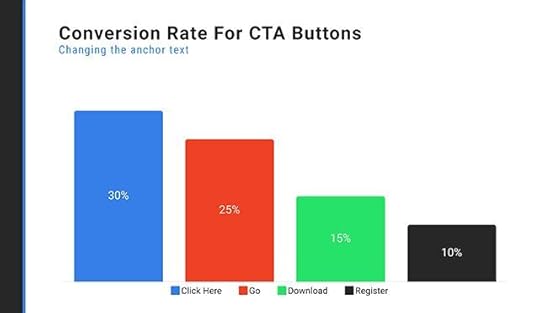
Image source: Unbounce.com
Here are tips to create killer CTAs:
Laser focus – Be specific. “Sign Up Here” or “Buy Now”. Don’t leave them wondering what to do.Action language – Use powerful verbs like “Get”, “Join”, and ”try”. Makes it feel urgent.Benefit-driven – Emphasize what they’ll get – “Get 50% Off Today Only”. It’s all about them.Contrast – Make it stand out with colors, sizes, or shapes versus the background. Pops out.Clickability – Use buttons, links, and touchscreen-friendly designs. Makes it easy to act.Incentives – Special sales, contests, or gimmicks entice response. But don’t give away the farm.Scarcity – “Limited spots available” or “Sale ends tomorrow”. Fear of missing out (FOMO) still works.Test options – Try different colors, headlines, and designs. See which CTA has the highest response.Let’s look at some CTA examples that convert:
“Get 10% Off Your First Order”
Action verb “Get”Benefit – extra savingsUrgency – first orderVery clear what you get“Sign Up Now and Start Reading Instantly.”
Action verbs “Sign Up” and “Start Reading”Benefit – instant accessScarcity – “now”Explains value simply“Join Our Newsletter for Exclusive Content”
Direct call to joinBenefit explained – exclusive contentShort and sweet
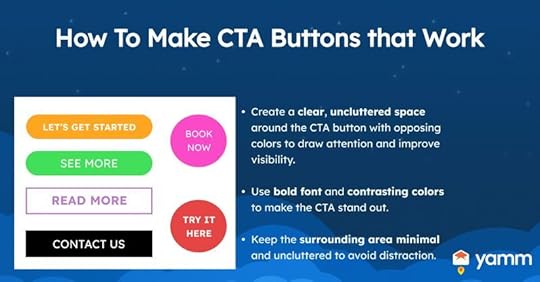
Image source: yamm.com
Test CTAs relentlessly to maximize response! A great one focused on your audience is money in the bank.
A/B Testing for Direct ResponseWant to boost your direct response? A/B testing is the secret sauce of a winning direct response campaign.
A/B testing means trying two different versions to see which performs better. Then, double down on what works.
You can test anything – headlines, images, offers, ad layouts, email content, etc. Even little changes can have a big impact.
Here is how to run killer A/B tests:
Pick something to test – The CTA button color, image type, offer headline, etc. Changing one thing at a time is best.Set up a control – The current version visitors see. This is the baseline you want to beat.Make a variation – Create a new variation, like a new headline or button design.Split traffic 50/50 – Serve control to half the visitors and the variation to the other half. Tools can do this for you automatically.Compare performance – Look at click-through rate, sales, signups, etc. See which version did better.Double down on the winner – Make the better performing one the new permanent version. Then, start testing something else.Keep testing and improving! It takes the guessing out of marketing. Let the data drive your decisions through A/B tests.
Measuring and Analyzing Campaign PerformanceUnlike regular ads, a direct marketing campaign should elicit a response instantly and show clear results. But you need to track the right stuff.
These are key metrics and KPIs to monitor:
Impressions – How many times your ad is seen.Reach – Total number of people who see it.Clicks – Clicks on your CTA or link.CTR – Click-through-rate – Clicks divided by Impressions.Conversions – How many people take action like sales?CPA – Cost per acquisition or action. How much do you pay per conversion?ROAS – Return on ad spend. How much revenue do you make per ad dollar?Many tools, like Facebook Ads Manager or Google Analytics, can automatically track these data for you. Use them to pull numbers.
For email marketing, see opens, clicks, and unsubscribes.
For direct mail, use unique codes to track responses back to the campaign.
Use call tracking numbers on your marketing ads to count calls. Associate them with campaigns.
Review data regularly – weekly or monthly. Look for what’s performing well or not so hot. Find opportunities to improve.
Try changing the target audience, offer, creative, channel, etc. See if the results go up. Rinse and repeat.
Use data to guide where to spend more or less. Double down on what works and kill what doesn’t. Optimize for success!
Tools for Campaign AnalyticsHere are some top digital marketing tools for tracking and analyzing direct response performance:
Facebook Ads Manager – The built-in analytics for Facebook campaigns show conversions, CPA, ROAS, and more.Google Analytics – Track website traffic and conversions from all channels and provide customizable reports.Mailchimp – Reports for email campaigns like open rate, click rate, and unsubscribes.CallRail – Tracks phone calls from marketing and analyzes.Hotjar – Records on-site behavior like clicks to identify issues.OptinMonster – A/B test and optimize signup forms and lead gen.Metric + optimization = money. Use data to keep improving your direct response efforts over time.
Integrating Direct Response with Overall Marketing StrategiesDirect response marketing is great for driving immediate sales. But it can’t stand alone. You still need brand building.
That means you should run some ads that increase awareness and shape perceptions about your business. Brand-building marketing gets people interested in your business. Direct response then converts that interest into sales. Together, they become more powerful.
Here are marketing tips to align them:
Use the same offer, images, colors, and logo in both. Consistency builds recognition.Funnel branding awareness into direct response. Example – target website visitors with special deals by email or Facebook ads.Share valuable content on social media to nurture followers. Then, promote offers and events to them.Retarget people who sign up for content with related products or services. Guide them through your sales funnel.Make branded content like videos shareable to reach more people. Include calls to sign up or purchase.Use branded ads to target broad audiences and shape perception. Use direct response only with hot leads who are primed to buy.When branding puts your name out there, direct response capitalizes on it to drive action. They work better together.
Some examples:
Coca-Cola runs brand ads to associate their soda with happiness. Then, they promote sales of Coke products in stores with coupons and price discounts.Netflix airs humorous TV ads about how easy it is to watch anywhere. Then, they retarget engaged viewers via digital ads with a free trial offer.The combo of brand love + direct action is unstoppable. Align efforts for maximum sales lift!
Building Brand Loyalty Through Direct ResponseDirect response marketing can drive immediate sales. But it can also grow lasting brand loyalty when done right.
The key is to focus on the entire customer lifetime value – not just the first purchase.
Turn buyers into loyal fans by:
Collecting their contact info like email. Use it to keep in touch after the sale.Following up with helpful tips and content. Show you want to assist them – not just sell.Surprising with gifts or discounts. Delight them so they remember you.Making returns and support easy. Don’t give them reasons to leave.Asking for reviews. Feedback helps improve. Plus, it builds social proof.Building an engaging email list with the value they want. Send consistently.Using polls and surveys to keep improving for them. Listen closely.Creating a community and conversations via social media.Offering a loyalty program with special perks and prizes.When you wow customers at every step, it earns true loyalty beyond just sales. They become fans, and that’s marketing gold.
Here are some top brands that do this well:
Nike engages followers on social with new product teasers and athlete content. This maintains the brand relationship between purchases.Starbucks emails members freebies and offers on their birthdays and holidays. Little surprises go a long way.Amazon Prime gives perks like free shipping and entertainment. The subscription loyalty program reduces churn.Use direct response for instant sales lift. Then, leverage it to build an audience you engage across the customer lifecycle. That’s a powerful instrument for achieving your marketing goals and driving lasting success.
Leveraging Emerging TechnologiesNew technologies open up exciting possibilities for improving direct response marketing. Artificial intelligence (AI) makes targeting and messaging hyper-personalized. It studies customer data to tailor everything to each individual. Chatbots interact with website visitors 24/7 to learn about them. Then, they recommend relevant products and offers. Marketing automation uses data to trigger personalized emails, text messages, and ads automatically to each person. Predictive analytics looks at past behaviors to forecast what customers want next. This allows you to get in front of their needs. Virtual and augmented reality allow customers to experience your product digitally. This deeper brand engagement lifts response. And everything integrates. One unified customer view and journey across all touchpoints. Brands innovating with tech include:Levi’s uses AI to tailor product recommendations to each shopper. This has increased conversions and revenue1-800-Flowers chatbot Concie helps customers pick the perfect bouquet with quick convenience. Netflix applies predictive analytics to suggest shows based on your past viewing activity. Their algorithm drives 75% of stream time.
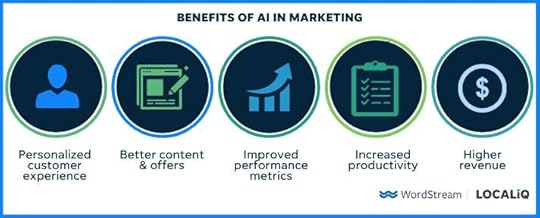
In this day of flashy social media ads and influencer marketing, it can be easy to forget about some of the OG direct response marketing formats.
But many of these old-school tactics still pack a major punch when it comes to driving instant sales and leads. Let’s look at ten prime examples of direct response marketing so you can get ideas to step up your marketing efforts!
Direct response marketing example #1: Long-form sales letters
Brands like Agora Financial use long-form sales letters to good effect. These sales letters allow you to use stories, testimonials, and tons of persuasive copy to sell the value of your offer.
When done right, a long-form sales letter can compel readers to whip out their wallets by the time they reach the end.
The key is grabbing attention from the start with a compelling headline and guiding readers through a narrative that builds desire.
Of course, writing these epics is a skill – one that many top marketers have perfected.
Direct response marketing example #2: Call-to-action emails
A classic direct response tactic that’s still crushing it today is the good old call-to-action email. We’re talking about emails that:
Have a singular focus – like promoting a sale or limited-time dealInclude a strong call to action button or linkAim to elicit an immediate response from subscribersThis could be an email that offers a two-day flash sale, prompts readers to register for an upcoming webinar, or urges them to try out your app with a special promo code.
Direct response emails work because they land directly in subscribers’ inboxes and catch their attention with timely, action-oriented offers. The calls to action allow readers to seamlessly convert or take the next step from within the email.
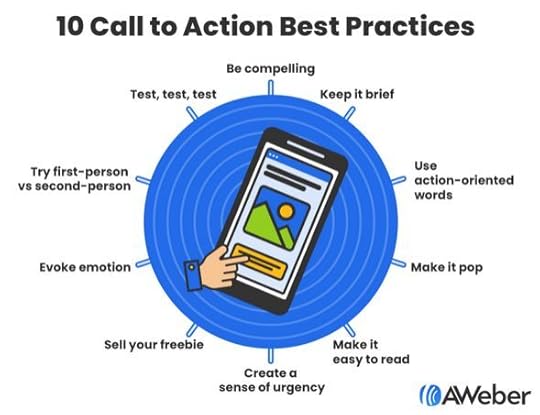
Research conducted with marketers worldwide revealed that email marketing has an average return on investment of 3600% – for each $1 invested, $36 is earned back.
Remember that every email must speak directly to what the reader will gain, whether it’s exclusive savings, entertaining content, or early access. Give them a clear reason to click your CTA immediately.
Direct response marketing example #3: Product launch formulas
Savvy marketers use strategic direct response techniques to maximize sales when launching a new product.
Let’s call them product launch formulas! The goal is to create buzz and demand right out of the gate.
Some common product launch formula ingredients include:
Free plus shipping offer: Let customers pre-order the product for just the small price of shipping. This mitigates risk.Affiliate marketing: Recruit influencers and affiliates to promote pre-orders to their email lists for commission.Scarcity: Limit pre-order stock to 500 units or close pre-orders after a short window to spawn urgency.Price bump: Slowly increase the price as launch day approaches. Early buyers get the best deal.Masterfully executed, these launch strategies leverage direct response principles to drive engagement and conversions for a new product.
Direct response marketing example #4: Lead generation ads
Targeted Facebook and Google ads focused squarely on generating leads are fantastic marketing tools. These ads capture targeted leads for your business.
These direct response ads typically drive clicks to a dedicated landing page with a lead capture form. So, they cut out any distractions and go straight for the conversion.
Here’s how it goes:
Ad targets a particular audienceClick goes to lead gen landing pageVisitor opts in by filling out a formThe best lead gen ads speak directly to the intended audience. For example, an ad targeted to HR managers would pitch solving their hiring woes. This laser focus is what makes lead generation ads shine for direct response.
Direct response marketing example #5: Webinars
In the last few years, webinars have become a go-to tool for many marketing experts. And for good reason – they blend education and promotion beautifully!

Image source: luisazhou.com
A smartly crafted webinar works like this:
Offer value upfront – Tactically teach relevant skills or inform about a topicMake your pitch – Describe how your product or service solves their problemCall to action – Invite to purchase, sign up, book a call, etc.See how neatly a webinar nurtures viewers into becoming qualified, eager leads? You establish expertise and rapport through the teaching portion. Then, you direct interested viewers straight into your sales funnel.
This format allows you to leverage viewers’ engagement and intent to buy. Much more effective than cold traffic! Plus, webinars scale well and can be repurposed.
Direct response marketing example #6: Direct mail
Now for a classic and continually effective direct response avenue – direct mail. That’s physical mailings like postcards, letters, catalogs, etc., sent to targeted mailing lists.
While they seem old-school, direct mail campaigns boast incredible response rates. Who doesn’t get a little excited about checking the mailbox to see what’s arrived?
Some stellar features of direct mail for marketing include:
Laser-targeted based on database selectionAttention-grabbing with creative shapes, sizes, and colorsTactile format makes recipients more inclined to engageAllows tracking clicks to websites, toll-free calls, form fills, etc.With so much competition online, direct mail can be a differentiator. Following direct response principles, create a compelling offer, add tracking, and get ready to convert mailbox visitors into buyers.
Direct response marketing example #7: Infomercials
Infomercials are designed to drive immediate response for product sales on television. These direct response advertising spots thoroughly demonstrate products while a narrator explains in minutes the many benefits. The goal, of course, is immediate sales.
Infomercials often utilize:
Dramatic demonstrations showing how the product solves a problemCustomer testimonials backing up the claimsRisk reversal via money-back guarantees to reduce hesitationUrgency principles via limited-time offers or call-to-action countdownsOrdering mechanisms like toll-free numbers displayed on the screenAn infomercial is the ultimate DRTV (direct response television) formula for moving products!
Direct response marketing example #8: SMS marketing
Marketing through text messaging is quickly becoming a top direct response strategy. And for good reasons:
 Text open rates are crazy high – like 98% high! Much better than email.
Text open rates are crazy high – like 98% high! Much better than email.
 Messages are received in real-time on the device in the recipient’s pocket. It’s easy for them to take instant action.
Messages are received in real-time on the device in the recipient’s pocket. It’s easy for them to take instant action.
 Clicks, conversions, and other metrics are readily trackable.
Clicks, conversions, and other metrics are readily trackable.
 Two-way communication allows for natural conversations that nurture relationships.
Two-way communication allows for natural conversations that nurture relationships.
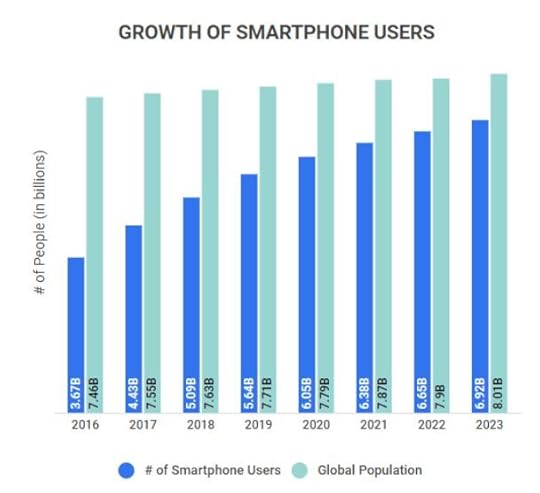
Image source: zippia.com
With SMS, brands can send timely offers, content, and value that spark an immediate response from subscribers.
Examples of direct response SMS campaigns include:
Alerting loyalty members of a 24-hour flash saleProviding an exclusive promo code for the next purchaseSharing a link to limited-time webinar registrationSending safety notification updatesSee why SMS is primed to deliver conversions for your business? Get their attention and prompt action fast with text message marketing! 
Direct response marketing example #9: Retargeting ads
Now let’s look at how brands stay top of mind after someone leaves their website. Remarketing or retargeting ads are the answer!
These display and social adverts target recent site visitors browsing the web. The ads remind people about offers, encouraging them to retake a look at the offer.
For example, if a visitor leaves your online store without buying, you can retarget them with ads showing that product they viewed or special promotions to entice their return.
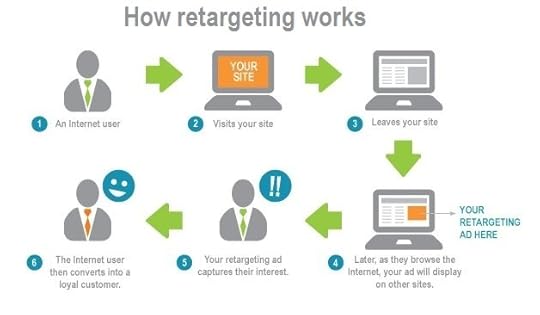
Image source: readycloud.com
The ability to keep your brand and offers front and center after they initially engage makes retargeting a powerful direct response method. You can pull abandoned visitors into your sales funnel with perfectly timed messaging.
But don’t stalk them forever! Make sure to cap the frequency so your retargeting ad campaigns don’t become an annoyance. When executed strategically, retargeting helps turn window shoppers into actual shoppers! 
Direct response marketing example #10: Free offers
Free is an amazing word. Just putting “free” on something sparks attention and action. Direct response marketers use this to their advantage with strategic free offers. Free draws people in because there’s no risk or money needed from them. A free sample, free consultation, free trial – it’s easy to say yes! Free offers set the hooks for a direct response by removing all barriers and excuses to engage. Once you get people participating thanks to free, you can then convert that interest into paid products. For example, a company might:Give a free tool, then upsell a premium version. Offer a free trial that leads to paid subscriptions. Provide free informational content that builds into a paid program.Send free samples that get recipients hooked on buying more.Give free bonus gifts to those who purchase something.See how free gets the direct response cycle moving? It attracts people, they get value from your business, and you build trust to sell to them after. And don’t forget – free offers allow you to gather leads! You can require an email or details to access free things. This gives you contacts to follow up with. Free offers are one of the best direct response tools.Direct response marketers also use scarcity with free to drive urgency. “Get this free trial before time runs out!” This pressure to act multiplies the response.
Successful Direct Response Campaigns
Let’s explore some real-world success stories from direct response marketing:
Dollar Shave Club
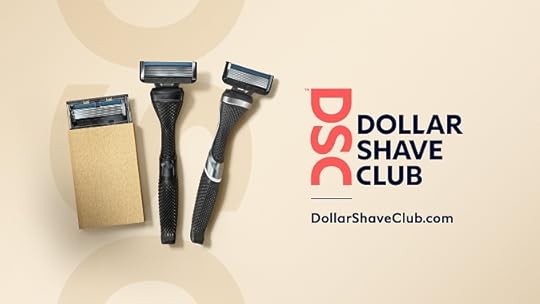
This startup disrupted the razor market with a viral video. It highlighted their subscription service delivering razors to your door. The entertaining ad was a big hit. It gained 12,000 subscribers in 48 hours!
Their engaging social media kept the buzz growing. Clever online ads retargeted viewers with discounts to convert.
Just five years after launch, Unilever acquired them for $1 billion! Fun branding + smart, direct response fueled huge growth.
Hotjar

This analytics startup focused on content marketing and direct response to raise awareness.
They created visual guides and ebooks with actionable tips on topics like conversion optimization. And a compelling free-forever plan that gives users access to several helpful tools.
This content generated 150,000 new leads in just 12 months! It expanded its audience and nurtured signups. Response-driven content marketing fueled their growth.
Direct response promotions take many forms. But tailored messaging, compelling offers, and calls to action are universal keys to success. Apply them, and your campaigns will deliver!
ConclusionWe’ve seen the power of direct response marketing. When done right, it grabs attention and drives action.
Direct response works across several channels – social media, TV, email, text, and more. Track results to improve campaigns. Innovate with new technologies like AI.
To boost sales now, you must speak directly to the right audience. Make irresistible offers and have clear calls to action. Drive the response you want!
The strategies provided in this guide will get results if you implement them!
Need help to get your target audience to respond to your marketing message? AdvertiseMint can provide customized, profitable direct response ads for your business.
Partner with us, and let’s use our experience in direct response marketing to drive sales and grow your business.
Our paid ads experts can tell you more if you request a consultation.
Click here to request a FREE Facebook ads consultation now!
It takes less than a minute.
Selling on Amazon Handmade: Getting Started
Are you interested in selling on Amazon Handmade?
As mass production continues to rise, there is a growing appreciation for the uniqueness and artistry of handmade products. Amazon Handmade is a platform for artisans to show their creations to prospective buyers.
This article will tell you what Amazon Handmade is all about and how you can make money from it.
What Is Amazon Handmade? Source: Canva
Source: CanvaAmazon Handmade is a special section of Amazon where artisans and craftspeople can sell their unique, handcrafted products. It’s an online marketplace for beautifully crafted goods. If you enjoy making handmade jewelry, art, or other creative items, Amazon Handmade provides a platform to showcase and sell your creations to a global audience.
Read more: What Is Merch by Amazon?
Advantages of Selling Handmade Products on Amazon Source: Canva
Source: CanvaThe following are the advantages of selling handmade products on Amazon:
Global reach: Amazon has a vast customer base. So, Handmade sellers that choose this platform get to market their products to people worldwide. This is more exposure than you can get on your own.Trusted platform: Amazon is a trusted platform known for its security and reliability. Hence, selling on Amazon Handmade gives artisans the credibility that they are legitimate sellers.Easy setup and use: Creating a seller account and setting up your Amazon Handmade shop is easy. The platform has user-friendly interfaces and tools. So, even people with little technical expertise can navigate it easily.Customization and personal branding: Amazon Handmade allows artisans to create a unique storefront to show their identity as a brand more. The store’s brand identity helps businesses build personal connections with their customers.Dedicated handmade marketplace: Amazon Handmade is a dedicated marketplace for artists. Hence, the platform attracts customers who are seeking handcrafted items alone.How To Get Started Selling on Amazon Handmade Source: Canva
Source: CanvaAmazon Handmade differs from the regular Amazon marketplace because it’s exclusively for handmade items. Follow these steps to get started on the platform:
1. Create your Amazon Handmade Seller Account.First, you should go to Amazon Seller Central and register for a seller account. The application process to join Amazon Handmade is a little tedious. Unlike other platforms, you must apply to Amazon Handmade and have your products approved before you can start selling.
2. Choose the right handmade products.Next, you should provide Amazon Handmade details about your business and craftsmanship. Amazon is very strict when it comes to assessing the legitimacy of its sellers. Hence, you should show the authenticity of your products.
3. Create high-quality listings.Click the “Add a Product” button within your seller dashboard to start listing your handmade products. Follow the product listing guidelines provided by Amazon Handmade to ensure accuracy.
4. Understand Amazon Handmade shipping policies.Understand Amazon Handmade’s shipping options, rates, and delivery times for your products. Amazon requires certain shipping guidelines that sellers should follow. Knowing and complying with these policies ensures that you avoid penalties or suspension.
5. Provide exceptional customer service.You should ensure excellent customer service by addressing customer inquiries on time. This helps ensure that customers are happy with their transactions and purchases. They are more likely to become repeat customers and may provide positive reviews and referrals when satisfied.
6. Monitor performance and optimize.Monitoring your sales, feedback, and product performance consistently using Amazon Seller Central’s analytics is important. Likewise, you should optimize your product listings, pricing, and marketing strategies to improve your shop’s performance.
Final Thoughts on “Selling on Amazon Handmade”Amazon Handmade is a helpful platform for artisans aiming to grow their businesses. Its global reach, trustworthiness, and powerful tools open doors to a vast audience while simplifying the selling process. So, if you’re passionate about your handmade creations, don’t hesitate to explore Amazon Handmade’s opportunities.
Do you want more people to see your products on Amazon? Contact the best Amazon ad agency!
Frequently Asked QuestionsWhat are the fees that come with selling with Amazon handmade?Listing fees associated with handmade items on Amazon are a small investment for the visibility gained among millions of potential customers. When you make a sale, Amazon takes 15%. However, you don’t pay anything upfront for listing your products.
What is a professional selling plan on Amazon?A professional selling plan on Amazon is a subscription-based account that allows individuals or businesses to sell products on the platform. It offers features like bulk listing and inventory management, access to advertising tools, and the ability to sell in multiple categories.
How do I handle returns and customer service on Amazon Handmade?Sellers are the ones responsible for managing their own returns and customer service. Hence, providing excellent customer service is important on Amazon Handmade. This includes addressing inquiries promptly and resolving issues professionally.
Related ArticlesHow to Create an Amazon Wish List
How To Become an Amazon FBA Seller
Do you want to learn how to become an Amazon FBA seller?
Amazon FBA offers a unique opportunity to anyone looking to start an e-commerce business. It lessens sellers’ burden by helping them manage their e-commerce business more efficiently. However, you need to understand the steps involved and the strategies that lead to success to get it right.
This article will discuss how to become an Amazon FBA seller and maximize this opportunity.
What Is Amazon FBA? Source: Canva
Source: CanvaAmazon FBA is a service that allows sellers to store their products in Amazon’s fulfillment centers. Whenever a customer orders, Amazon picks, packs, ships, and provides customer service for the products.
Establishing an Amazon FBA business can be a game changer for those entering the e-commerce business arena. Many of the most successful sellers on Amazon use FBA to handle logistics and focus on strategies to generate sales.
Read more: Amazon FBA vs. FBM.
Advantages of Using FBA for Sellers Source: Canva
Source: CanvaThe following are the advantages of using FBA for sellers:
Inventory storage: Sellers would send their products to Amazon’s fulfillment centers for storage. The fulfillment center will store the inventory until a customer places an order.Order processing: Amazon processes the order when a customer purchases a product.Customer service: Amazon handles queries from the customer, as well as returns and refunds. Amazon FBA ensures that the customers’ concerns will be addressed to ensure their satisfaction.Shipping and delivery: Amazon is also the one that manages the shipping process. It includes picking the best shipping method and ensuring the product is delivered on time to the customer.Inventory management and reporting: Amazon gives detailed reports on inventory levels, order status, payments, and other metrics. This enables sellers to track and manage their business more efficiently.Global reach: Amazon FBA enables sellers to reach global customers by handling international shipping and customs processes.Read more: Is Amazon FBA worth it?
How To Become an Amazon FBA Seller Source: Canva
Source: CanvaThe following are the steps you should follow on how to become an Amazon FBA seller:
1. Setting up your Amazon Seller account.First, go to Amazon Seller Central and sign up for a seller account. You will have to provide your business details and personal information and agree to the terms and conditions.
2. Research and select products.Conduct market research to identify possible products to sell. You should check for demand, competition, profitability, and product categories that interest you.
3. Source products.Find suppliers or products to sell on Amazon. Look for products that match your market research. Ensure each product has a steady demand and provides a reasonable profit margin.
4. Prepare products for FBA.You should follow FBA’s requirements for packaging, labeling, and preparing your products for shipment to Amazon fulfillment centers.
5. Create product listings.Optimize your product listing by adding relevant keywords. You should also add good product images and adjust your pricing to enhance your shop’s visibility and sales.
6. Prepare shipments.You should create a shipment plan, print shipping labels, and prepare before sending your products to the designated Amazon fulfillment center.
7. Ship products to Amazon.Once everything is set, you can ship your products to Amazon.
Final Thoughts on “How To Become an Amazon FBA Seller”Amazon FBA can be a game-changer for your e-commerce aspirations. By following the steps outlined in this guide, you’re well on your way to becoming a successful Amazon FBA seller. Remember, dedication, continuous learning, and exceptional customer service are your keys to thriving in the online marketplace.
Do you need a helping hand on your journey as an Amazon seller? Contact the best Amazon advertising agency now!
Frequently Asked QuestionsWhat are the costs associated with using Amazon FBA?Amazon charges sellers 15% of the product’s selling price. Furthermore, FBA has two types of fees: fulfillment fees (for packing and shipping) and inventory storage fees.
Is there a minimum number of products I need to start using Amazon FBA?There is no minimum. However, it is advisable to have substantial products to make the most of FBA.
How often should I restock products in Amazon’s fulfillment centers?You should monitor your inventory levels regularly and restock your products. This will help prevent your inventory from running low.
Related ArticlesOctober 11, 2023
What Are the Best Selling Products on Amazon?
Would you like to know the best selling products on Amazon?
Amazon is the go-to destination for millions of shoppers seeking everything from the latest gadgets to everyday essentials. New sellers looking for high-demand products to sell have many choices regarding the best-selling products on Amazon.
This article will unveil the top-selling categories on the Amazon store marketplace.
What Are the Best Sellers on Amazon?

Source: Pixabay
The Best Sellers on Amazon are top-selling products currently leading in popularity on the Amazon online marketplace. These top-selling items are top choices among many customers and consistently sell well in their respective categories.
They are updated hourly on the Amazon website to reflect shoppers’ current trends and preferences. Hence, new Amazon sellers can easily discover popular categories and the best products to sell on the platform. Essentially, these best sellers represent the most successful and top-selling items on Amazon at any given time.
Read more: How to create an Amazon seller account.
How To Find the Best Selling Products to Sell on AmazonEmbarking on a selling journey on Amazon can be both exciting and overwhelming. Discovering products that align with market trends and resonate with your selling aspirations is crucial. Follow the process below to find the top-selling products on Amazon that perfectly suit your selling needs:
1. Navigate Amazon Best Sellers.The starting point for any aspiring seller on Amazon is the Best Seller section. You will find a dynamic list of products flying off virtual shelves here. This list provides valuable insights into trending and high-demand products.
2. Explore Amazon’s “Movers and Shakers.”Check out the “Movers and Shakers” section for a glimpse into products rapidly becoming popular. This section highlights products that have experienced a recent surge in popularity. It is an excellent indicator of emerging trends and potential hot sellers.
3. Identify your niche.Before diving into the vast Amazon store, consider your niche. Are you passionate about beauty and personal care products, home goods, or fitness trackers? Identifying your niche narrows your focus, making finding products that align with your interests and expertise easy.
4. Utilize Amazon’s product categories.Amazon conveniently categorizes products into various departments. Explore these categories to discover areas of interest. Whether it’s electronics, fashion, or kitchen essentials, drilling down into specific sections helps you pinpoint potential winners.
5. Check customer reviews.Customer reviews are a goldmine of information. Analyze reviews of similar products to what you plan to sell. Understand what customers love, what irritates them, and how you can improve existing offerings. The feedback of Amazon reviewers helps you craft a product that caters to customer needs.
6. Monitor Amazon’s new releases.The New Releases section provides insights into new products recently hitting the market. This section is a great place to spot emerging trends and capitalize on the excitement surrounding fresh arrivals.
7. Employ Amazon keyword research.You can leverage Amazon’s search bar by entering relevant keywords for your potential products. Observe auto-complete suggestions and popular search terms. Doing this not only aids in understanding customer preferences but also helps you optimize your product listings.
8. Spy on your competition.Investigate what your competitors are offering. This isn’t just about copying their products but understanding market gaps and customer preferences. Differentiate your offerings by addressing unmet needs or providing unique features.
Best Selling Categories on Amazon

Source: Pixabay
The following are the best-selling categories on Amazon:
1. Electronics.The electronics category on Amazon is a playground for the latest technological marvels. From cutting-edge smartphones to smart home devices, customers are drawn to the promise of innovation and upgraded features.
2. Home and kitchen.Home and kitchen products have a universal appeal, offering everyday essentials and lifestyle upgrades. From sleek kitchen appliances to trendy home décor, this category enhances living spaces. This makes it a go-to for shoppers looking to beautify their homes.
3. Books.Books in physical and digital formats remain a timeless favorite of Amazon shoppers. The wide range of genres, from Best Sellers to niche reads, caters to diverse reading preferences. The convenience of Kindle and audiobooks adds an extra layer of appeal for modern readers.
Read more: How to sell books on Amazon.
4. Clothing, shoes, and jewelry.This fashion category offers clothing, footwear, and accessories for every style and season. The diverse fashion options on Amazon appeal to customers seeking trendy and affordable choices.
5. Health and household.Health and household products cater to customers’ well-being and self-care. From vitamins to supplements to personal care items, this category reflects the growing trend of prioritizing health and a holistic approach to wellness.
6. Toys and games.Toys and games offer timeless fun for both kids and adults. The variety, from classic board games to the latest toys, provides endless entertainment options for families. As a result, it is a go-to category for shoppers seeking joy and playfulness.
7. Sports and outdoors.The sports and outdoors category caters to fitness enthusiasts and outdoor adventurers. With various sports gear, camping equipment, and activewear, Amazon appeals to customers embracing an active and adventurous lifestyle.
8. Tools and home improvement.Tools and home improvement products empower customers to take on DIY projects. This category reflects a growing trend of individuals seeking to enhance their living spaces, from power tools to organizational solutions.
Final Thoughts on “The Best Selling Products on Amazon”The best-selling products on Amazon stores provide insights into shopping trends. From smart gadgets to kitchen essentials, these products have captured the attention of a diverse and discerning consumer base. Study these top-selling product categories on Amazon and learn how to find them to increase your chances of success when selling products on Amazon.
Are you looking to give your products more visibility on Amazon? Contact the best Amazon ad agency.
Frequently Asked QuestionsWhat makes a product the “best-selling” on Amazon?Amazon determines the best-selling items by measuring the sales volume within a specific period. Amazon regularly updates its best-seller rank based on customer purchases, reviews, and overall popularity in various categories.
How can I find the best-selling product in a specific category on Amazon?To discover best-selling items in a particular category, navigate to the Best Sellers section on Amazon. This section is organized by product categories, allowing you to explore the top-performing items in areas ranging from electronics to home and kitchen.
Are customer reviews a significant factor in determining best-selling products?Yes, customer reviews play a crucial role in determining the popularity of a product on Amazon. Positive reviews contribute to a product’s credibility and can influence its ranking.
Related ArticlesHow to Create an Amazon Seller Account: A Quick Guide
Would you like to know how to create an Amazon Seller account?
Creating an Amazon seller account should be one of your first steps to success if you want to sell online. Regardless of your business scale, Amazon provides a user-friendly platform to get your products in front of millions of potential customers.
This article will discuss all you need to know about creating an Amazon business seller account.
How To Create an Amazon Seller Account
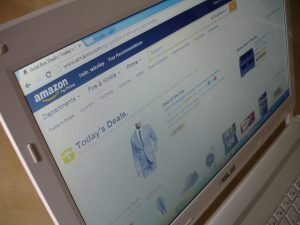
Source: Pixabay
Here is a step-by-step guide you can follow to create your Amazon Seller account:
Step 1: Navigate to Amazon Seller Central.The journey begins at the Amazon Seller Central website. Open your web browser and type in https://sellercentral.amazon.com/. Once there, look for the “Sign Up” button and give it a click to create your Amazon Seller Central account.
Step 2: Enter your email.Provide a valid email address to associate with your Amazon seller account. This email will be your primary contact for all your seller activities.
Step 3: Create a password.Choose a secure password to avoid unauthorized entries into your Amazon Seller account. A strong password usually includes a mix of uppercase and lowercase letters, numbers, and symbols. Once you set your password, hit the “Continue” button.
Step 4: Fill in your business information.Amazon needs to know a bit about your business. So, input your business address, name, and phone number. This information is crucial for setting up your seller profile.
Step 5: Verify your identity.Amazon may ask for additional details for identity verification. This verification may include providing your tax identification number and other business-related information. It is essential for maintaining a trustworthy marketplace.
Step 6: Choose your seller account type.Decide whether you want an individual or professional seller account. An individual seller account might be suitable if you are testing the waters. But if you’re serious about selling and plan to do it on a larger scale, go for the professional account.
Step 7: Enter your billing information.Amazon will require your billing information to get your products listed and start making sales. This information includes your credit card details and bank account information like your bank account statement, name, and account number. Amazon charges fees based on your sales and the account type you choose.
Step 8: Verify your phone number.Amazon might send a verification code to the phone number you provided. Enter this code to verify your phone number and complete the setup process.
Step 9: Set up two-step verification.For added security, set up two-step verification. This extra layer of protection ensures that only you can access your account.
Step 10: Read and accept the terms.Take a moment to read through Amazon’s terms and policies. If you agree, click the box to indicate your acceptance.
Step 11: Start selling.Congratulations! You have successfully created your Amazon Seller account. You can start listing your products and managing your sales through the Seller Central dashboard.
Read more: How much do Amazon sellers make?
How Do You Start an Amazon Business?

Source: Pixabay
Now that you know how to create your Amazon seller account, follow the steps below to start your Amazon business:
Step 1: Research and choose your business model.Amazon offers various business models that cater to different types of sellers. Understanding these models is crucial for anyone looking to start selling on Amazon. Below are the various business models you can choose on Amazon:
Retail arbitrage: In retail arbitrage, Amazon sellers purchase discounted or clearance products from retail stores and resell them on Amazon at a higher price. This business model requires a minimum upfront investment suitable for beginners.Online arbitrage: This business model is similar to retail arbitrage but is conducted online. Online arbitrage requires you to source discounted products from online retailers and resell them on Amazon. Compared to retail arbitrage, it has a broader product selection.Private labeling: In private labeling, you create a brand and sell products under it. It requires sellers to source generic products, label them with their brand, and sell them on Amazon.Wholesale: The wholesale business model requires Amazon sellers to purchase products in bulk from authorized distributors, buy in bulk, and resell on Amazon. With this business model, you gain access to a wide range of products and less focus on branding.Dropshipping: Sellers practicing this Amazon business model sell products without holding inventory. They list products for sale, and when a customer makes a purchase, they order the product from a third-party seller and ship it directly to the customer.Handmade: In the Handmade business model, sellers sell unique handmade or custom products. This business model requires you to create or craft your products and list them on Amazon Handmade.Merch by Amazon: This business model requires sellers to design and sell custom apparel. Sellers create designs, upload them to Merch by Amazon, and earn royalties on each sale. Merch by Amazon requires no upfront costs, and Amazon handles production and shipping.Kindle Direct Publishing (KDP): Sellers write and publish books through Kindle Direct Publishing and earn royalties on sales. This business model is a creative outlet with potential for passive income. However, it requires writing and marketing skills.Step 2: Set up your Amazon Seller account.Creating an Amazon Seller account is the first practical step. Follow the steps outlined earlier in this guide to set up your Amazon Seller account. Choose between a professional account and an individual seller account based on your business needs.
Step 3: Source or create your products.Decide whether you will manufacture, source, or create your products. You may consider sourcing from Alibaba or selling handmade items. Ensure your products align with Amazon’s guidelines and quality standards.
Step 4: Optimize your product listings.Create compelling product listings that provide accurate information and entice potential buyers. Use high-quality images, write engaging product descriptions, and include relevant keywords to improve your product’s visibility in Amazon search results.
Step 5: Pricing strategy.Establish a competitive pricing strategy. Research prices of similar products on Amazon and consider your costs, including manufacturing, shipping, and Amazon fees. Also, it would help if you considered running promotions or offering bundled deals to attract customers.
Step 6: Select your preferred fulfillment methods.Amazon offers different fulfillment methods to suit the diverse needs of sellers. These methods determine how your products are stored, picked, packed, and shipped to customers. The following are the fulfillment methods on Amazon:
Fulfillment by Amazon (FBA): If you use FBA, you send your products to the Amazon fulfillment center, and Amazon stores your inventory. When customers order, Amazon picks, packs, and ships the product. Also, the platform handles returns and customer service. Although your product has access to Amazon Prime benefits, fulfillment fees apply, and there are additional costs for storage.Fulfillment by Merchant (FBM): If you use FBM, you store your products. When a customer orders, you pick, pack, and ship the product. Sellers who use FBM handle customer service returns and have more control over the fulfillment process. Although FBM has lower fulfillment costs, it requires more hands-on involvement, and your products may not qualify for Amazon Prime benefits.Read more: Amazon FBA vs. FBM.
Step 7: Marketing and promotion.Utilize Amazon’s advertising tools to promote your products. Sponsored Products and Amazon PPC (Pay-Per-Click) campaigns can increase your product’s visibility. Also, leverage social media and other external marketing channels to drive traffic to your Amazon store. For the best results, we recommend using an Amazon ad agency.
Step 8: Customer service and reviews.Provide excellent customer service to build a positive reputation. You should reply promptly to customer inquiries and address any issue professionally. Encourage satisfied customers to leave positive reviews, as these reviews significantly impact your products’ credibility on Amazon.
Step 9: Scale your business.As your business gains traction, explore growth opportunities. Consider expanding your product line, exploring international markets, and optimizing your operations for efficiency. Stay updated on Amazon’s policies and adapt your strategies accordingly.
Step 10: Analytics and improvement.Regularly analyze your sales data and customer feedback. Use this information to refine your product offerings, pricing strategies, and marketing efforts. Adaptation is crucial in the dynamic world of e-commerce.
The Costs of Selling on AmazonSelling on Amazon involves various fees; understanding them is crucial for effective financial planning. Below are the various Amazon fees:
1. Individual seller account fees.Amazon charges individual seller account holders $0.99 per item sold.
2. Professional seller account fees.Amazon charges sellers who use the professional selling plan $39.99 every month.
3. Referral fees.Amazon charges all sellers a percentage of their items’ sales price, which varies by category, typically 12% to 40%.
4. Variable closing fees.These fees apply to media items such as books and DVDs.
5. Fulfillment by Amazon (FBA) fees.Amazon charges sellers for storage, picking, packing, and shipping. These fees vary based on products’ size and weight.
6. Storage fees (FBA).These fees are incurred for products stored in Amazon’s fulfillment centers, varying by the size and volume of inventory.
7. Long-term storage fees (FBA).These fees are charged for items stored for more than 365 days. So, it would help if you regularly managed your inventory to avoid long-term storage fees.
8. Refund administration fee (FBA).This fee is applied if Amazon issues a customer refund.
9. Subscription box fees (if applicable).Amazon charges sellers using the Subscription Boxes program.
10. Advertising costs.These fees vary on the type of ads, whether Sponsored Products or Sponsored Brands.
11. Shipping costs (if handling fulfillment yourself).These fees are determined by the shipping method and carrier you use.
Other Basic Things Sellers Should KnowThe following are some other basic things you should know before you start selling on the Amazon online marketplace:
1. Amazon Best Sellers Rank (BSR).Amazon Best Sellers Rank is a numerical ranking Amazon assigns to products based on their sales performance with specific categories. It considers recent and historical sales, considering factors like order frequency.
2. Selling products on Amazon Prime.Amazon Prime is a subscription service that offers various benefits to members, including free and fast shipping. Products eligible for Prime enjoy higher visibility and appeal to a large customer base.
Final Thoughts on “How To Create an Amazon Seller Account”You’ve opened a door of opportunities by learning how to create your Amazon Seller account and how to start selling on Amazon. Opening an online business on Amazon allows you to sell and showcase your products to a global audience. Remember to monitor your Seller Central dashboard for updates and opportunities while you’re at it.
Frequently Asked QuestionsWhy must I choose between a professional and an individual seller account?The account type determines your selling volume and associated fees. An Individual seller account suits occasional sellers, while a professional selling plan is for sellers with higher sales goals.
What are the key differences between Fulfillment by Amazon (FBA) and Fulfillment by Merchant (FBM)?FBA involves Amazon taking care of storage, packing, and product shipping, while FBM means you manage these aspects.
How can I optimize my product listings for better visibility on Amazon?Optimize your product titles, descriptions, and images. You should also use relevant keywords, provide accurate information, and aim for high-quality visuals to attract potential buyers.
Related ArticlesThe Best Items to Resell on Amazon
October 9, 2023
The Amazon Choice Badge and How To Get It
What does Amazon choice mean?
As a seller on Amazon, you’ve likely come across the coveted Amazon choice badge. But how can your brand land this recognition, and what does it mean for your business?
This blog will summarize the essentials of Amazon’s choice badge for Amazon sellers.
What is Amazon Choice?
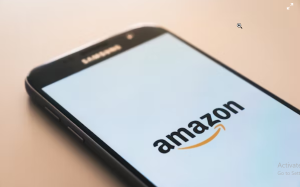
Source: Unsplash
Amazon’s Choice badge is more than just a virtual sticker; it symbolizes trust and recommendation. Amazon automatically awards this badge to select products based on various factors, making them stand out to potential buyers. Understanding the criteria behind this badge can help boost your product’s visibility as a seller.
The Difference Between Amazon’s Choice Badge and Amazon Best Seller BadgeWhile navigating the Amazon marketplace, understanding the differences between Amazon’s choice label and Amazon Best Seller badge is crucial. Below are the key differences between Amazon’s Choice badge and Amazon’s Best Seller badge:
1. Amazon’s Choice badge.Earning the Amazon’s Choice badge is like earning a gold star from Amazon. Your products get recommended to buyers as a reliable choice. Once you earn this badge, it will boost your credibility and make your products stand out among others.
Also, you can’t buy the Amazon’s Choice badge, but it can be earned by meeting Amazon’s standards. To get Amazon’s Choice label, you need good reviews, competitive pricing, and, often, prime shipping. If you want Amazon’s stamp of approval, go for Amazon’s Choice badge.
2. Amazon Best Seller badge.The Amazon Best Seller badge will help you sell your products faster than others in its category. To earn this badge, Amazon requires you to make a lot of sales. The more sales your products make compared to others, the better your Best Seller rank.
Acquiring this label will rank your products among trending and in-demand items. As a result, your products will attract shoppers, as people often trust products others are buying in droves. If you want to ride the wave of popularity, aim for the Amazon Best Seller badge.
The Advantages of Amazon’s Choice BadgeThe Amazon’s Choice badge has some cool perks that make it more than just a sticker. The following are the advantages of the Amazon’s Choice badge:
1. Boosted visibility.Amazon’s choice label increases visibility, putting your product in the spotlight for shoppers.
2. Credibility.Amazon’s Choice label notifies shoppers that your products are vetted and recommended by Amazon.
3. Edge in the marketplace.Amazon’s Choice label gives your product an edge over the competition in the vast sea of products.
4. Quick decision-making for shoppers.Shoppers love shortcuts, and this badge helps them make purchasing decisions faster, as they know they are choosing a reliable product.
5. Prime perks for prime products.This badge often comes with the perk of fast and free shipping, adding extra appeal for prime customers.
6. Trust in numbers.Positive customer reviews play a big role. The more happy customers, the better your chances of earning and keeping the badge.
How To Acquire the Amazon’s Choice Badge

Source: Unsplash
Below are ways to get the Amazon’s Choice badge and make your products stand out:
1. Prioritize customer satisfaction.Encourage customers to leave positive reviews, as great reviews increase your chances of getting Amazon’s approval. Also, engage with customer feedback by responding to reviews, addressing concerns, and showing that you care about customer satisfaction.
Read more: How to get reviews on Amazon.
2. Competitive pricing wins.Stay competitive with your pricing. While it doesn’t have to be the cheapest, it should offer good value for the quality of your products. In addition, monitor your pricing strategy. Regularly check and adjust it to stay in line with market trends.
3. Aim for Prime shipping.Prime-eligible products are favored, a big plus for Amazon and its customers. Consider using Fulfillment by Amazon (FBA) to enhance your shipping and delivery services.
4. Maintain popularity and availability.Keep your products in demand. Consistent sales show Amazon that your product is popular among customers. Ensure your products are consistently available, as running out of stock can affect your eligibility for the badge.
5. Optimize your product listings.Ensure your product listings are clear, informative, and unique to help customers make informed decisions. Visuals matter, so you should use high-quality images that showcase your products from different angles.
6. Encourage customer interaction.Encourage customer interaction on your product page and respond promptly. Replying to negative and positive feedback highlights your commitment to satisfying your customers.
7. Invest in Amazon AdsUsing Amazon ads strategically can improve your chances of earning the Amazon’s Choice badge. Amazon ads can increase your product’s visibility and drive more sales. When Amazon sees consistent sales from your product due to advertising, it may consider your item for the Amazon Choice badge. An Amazon advertising agency can help you get the best results.
ConclusionAmazon’s Choice is a powerful asset for sellers. It can boost your product’s visibility and credibility, leading to increased sales. To increase your chances of earning it, focus on customer satisfaction, competitive pricing, and strategic inventory management.
Frequently Asked QuestionsHow can I optimize my product listings to improve my chances of earning the Amazon’s Choice Seller badge?You can optimize your product listings by ensuring clear and informative descriptions, using high-quality images, and encouraging positive customer reviews.
Can sellers pay to get the Amazon’s Choice badge for their products?No, sellers can not buy the badge. Instead, you can earn it by meeting specific criteria Amazon sets, such as having good reviews and competitive pricing.
What’s the difference between Amazon’s Choice and Amazon’s Best Seller?Amazon’s Choice is a recommendation badge for individual products, while Amazon Best Seller is a label for products that sell the most in their category. They serve different purposes, but both highlight product quality and popularity.
Related Blogs


